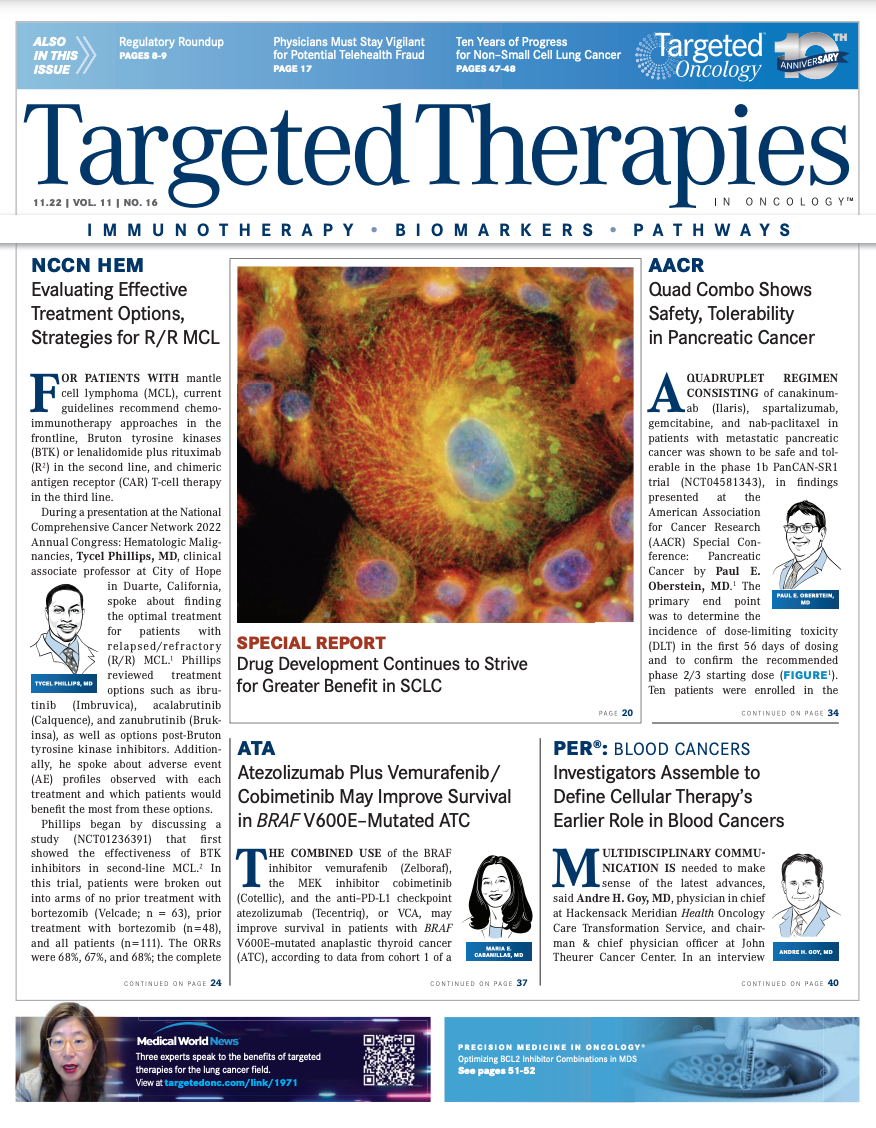Investigators’ Reach Extends Hope for Patients With Anaplastic Thyroid Carcinoma
Advances in thyroid cancer to date hold promise for other orphan cancers with analogous alterations, on which we might bring to bear agents that will have similar effects.
Robert L. Ferris, MD, PhD

Thyroid cancer is generally regarded as highly curable, particularly papillary carcinoma, the most common type of well-differentiated disease. Over the years, progress with respect to differentiated papillary carcinoma has included reduced-intensity surgery and led to cure for tumors under 4 cm in patients at low risk. However, there are aggressive variants and differentiation states that require multidisciplinary care. Until recently, high levels of mortality and morbidity had been observed for aggressive variants. and poorly differentiated thyroid carcinoma (PDTC) and anaplastic thyroid carcinoma (ATC).
Advances in molecular profiling of common genetic variants opened the way to distinguish benign from malignant tumors in indeterminate needle biopsies. Subsequently, genetic variants with a high risk of progression to recurrence and aggressive disease, like regional and distant metastasis, have become more clearly understood. They are the relatively common BRAF gene aberrations with alterations in TERT or TP53. Our knowledge of aggressive disease has allowed us to design trials for ATC and other poorly differentiated thyroid cancers that use agents targeting similar aberrations in other malignancies.
At the annual meeting of the American Thyroid Association in October, Maria E. Cabanillas, MD, of The University of Texas MD Anderson Cancer Center, Houston, presented data on dabrafenib (Tafi nlar) and trametinib combination therapy, which has been widely shown to inhibit melanoma caused by the same BRAF-activating mutation as seen in approximately half of aggressive thyroid cancers. Cabanillas et al combined dabrafenib and trametinib with an anti– PD-1 agent, pembrolizumab (Keytruda), and achieved dramatic clinical benefit for this otherwise devastating diagnosis.
Because of their proximity to and invasion of the great vessels and airway, PDTC and ATC are among the most morbid and visible malignancies. As a busy surgeon and clinical investigator, it is tremendously gratifying for me to see thoughtful researchers willing to address these orphan diseases. Patients with PDTC and ATC have benefited greatly from the efforts of investigators willing to tackle this cancer type, and we are seeing tremendous benefi ts by transferring agents and mechanistic targeting to this challenging disease. Clearly, we still have far to go. But advances to date hold promise for other orphan cancers with analogous alterations, on which we might bring to bear agents that will have similar effects.

Survivorship Care Promotes Evidence-Based Approaches for Quality of Life and Beyond
March 21st 2025Frank J. Penedo, PhD, explains the challenges of survivorship care for patients with cancer and how he implements programs to support patients’ emotional, physical, and practical needs.
Read More
Anticipating Novel Options for the RAI-Refractory DTC Armamentarium
May 15th 2023In season 4, episode 6 of Targeted Talks, Warren Swegal, MD, takes a multidisciplinary look at the RAI-refractory differentiated thyroid cancer treatment landscape, including the research behind 2 promising systemic therapy options.
Listen